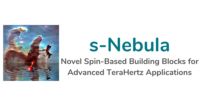Currently, some 32,500 students, 10 percent from abroad, study at JGU (www.uni-mainz.de), making it one of Germany’s largest Universities. JGU has a strong research focus and regularly achieves leading positions in international research rankings. Annually, about 700 PhD students complete their studies at JGU. The Welcome Center for visiting scholars and students provides support for all contractual, insurance, visa and accommodation issues. In the recent ranking survey for funding for basic natural science by the DFG the University was most successful among all German universities not only in total but also per scientist. Within the University the condensed matter physics division took the lead emphasizing the fact that the Department of Physics of JGU is one of the largest and most highly ranked departments (top 5-10 in Germany, top 50-100 in recent rankings globally). More than 40 Professors and more than 100 permanent faculty members as well as 300 PhD students have attracted a research cluster as well as a graduate school (Materials Science in Mainz).
The group of Prof. Mathias Kläui focuses on Nanomagnetism and Spin Dynamics and has a wide range of equipment for magnetic thin film deposition and characterization including in-situ MOKE, XPS, UPS, STM, LEED and electrical transport measurements. For the deposition, a commercial industry – type Singulus Rotaris System with 18 targets and fast deposition on up to 8” wafers is available, which can deposit high quality TMR multilayer stacks. For novel materials MBE, sputter and PLD deposition tools are used. Wide range of techniques for magnetic investigations, including high frequency (40GHz) cryosystems with vector fields (up to 5T and single directions of 15T) and VNA-FMR. To image surfaces and nanostructures, atomic force microscopy and magnetic force microscopy is available with vector coils up to 1 kOe. High resolution magnetic imaging by MFM, SEM with polarization analysis, and high speed focused MOKE magnetometer. For dynamic magnetic imaging, photoemission electron microscopy, scanning transmission x-ray microscopy and x-ray holography are used at synchrotron sources. A complete nanofabrication facility with E-Beam lithography (Raith Pioneer), ion etching with SIMS, etc. is available at the Technology Platform of the Johannes Gutenberg-University Mainz.
